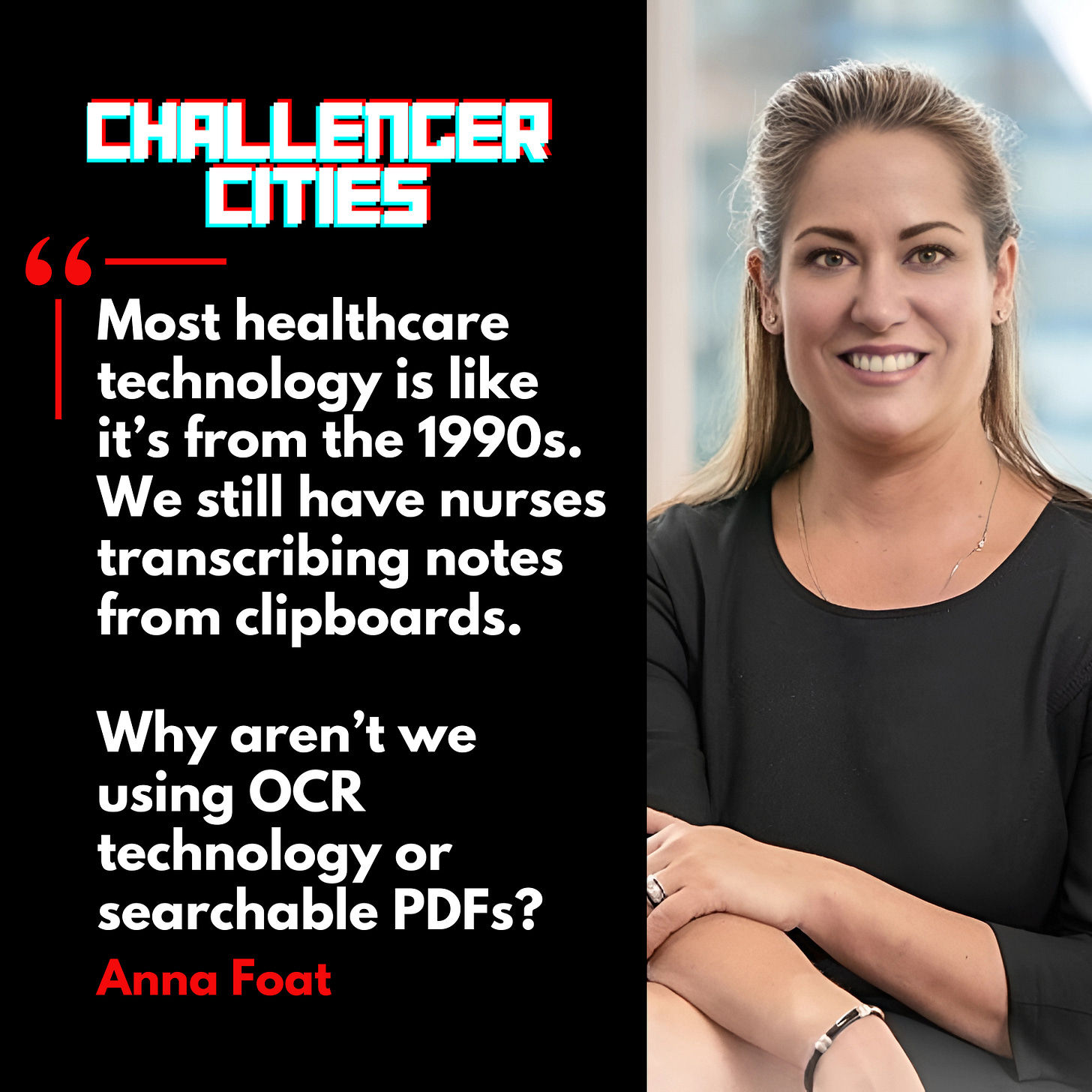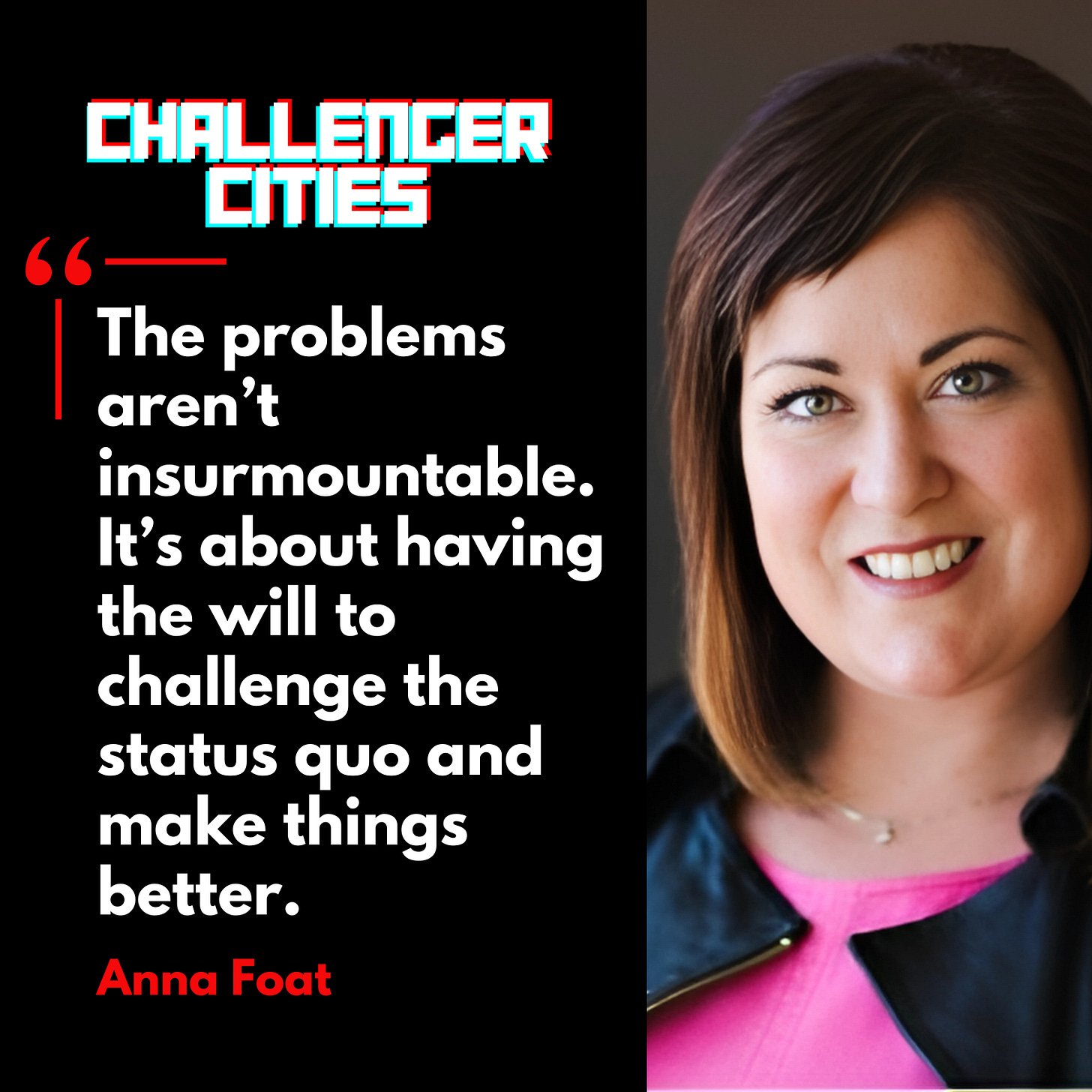Healthcare can be a bit of a blindspot in the urbanism realm, and I say this as someone who has traditionally avoided the area in my consulting career as a place where things get slow, complicated and compromised.
This is why I had to speak with Anna Foat, as she’s someone who knows a hell of a lot more than me on the subject, but has the perspective how how we can have a positive impact. I wanted to hear from her about how cities can be challengers when it comes to healthcare, and use somewhere a bit off the beaten path as an example in Sault Ste. Marie.
(it’s a border city between Ontario and Michigan … in case your were wondering).
A System in Crisis
“People often think healthcare is free, but nothing’s truly free,” Anna begins. Across Canada and beyond, healthcare systems designed decades ago are struggling to adapt to new realities. “Doctors are practicing medicine differently than they did 20 years ago,” she explains. Fewer physicians are choosing to dedicate themselves entirely to family medicine, juggling multiple roles instead.
The challenges are compounded by demographic shifts. “People are living longer with chronic diseases,” Anna notes. “They expect to live well into their 80s or 90s. But the systems were built for a time when retirement was followed by just a few years of life.” This disconnect between expectations and infrastructure has created what Anna describes as a “rat’s nest” of problems.
Sault Ste. Marie: A Case Study in Creativity
Against this backdrop, Sault Ste. Marie offers an interesting story. Historically a steel town, the city of 75,000 has faced significant healthcare challenges but has also developed innovative solutions. “When the steel plant set up here, they established Group Health. It was like a mini hospital, integrating doctors, nurses, nutritionists and more. At its peak, it served 50,000 people.”
Equally transformative is the work of the Northern Ontario School of Medicine (NOSM). “They focus on rural generalists, doctors who thrive in diverse, high-pressure environments,” Anna says. By recruiting and retaining practitioners who understand the unique challenges of Northern Ontario, NOSM is building a healthcare workforce tailored to the region.
This feels so important for secondary and tertiary cities to be Challengers, preventing the brain drain to the bigger urban hubs, but also ensuring the development opportunities are not copying somewhere else but developing skills that are locally relevant, sometimes uniquely so. That then draws talent in, going beyond stemming the flow.
The Case for Prevention
Anna’s vision extends beyond treatment to prevention. “We don’t make the healthcare point when designing cities,” she argues. Active transportation—like walking and biking—not only improves physical health but also fosters social connection. We talk about how in some countries, doctors will prescribe things train tickets to get people active, out and about. Moving more and being outside isn’t a fluffy thing, it has real impact.
Closer to home, Ontario is experimenting with similar measures. “They’re prescribing passes to provincial parks,” Anna says. “Access to nature is a powerful tool for improving mental health.”
Breaking Down Barriers
A recurring theme in Anna’s insights is the inefficiency of current systems. She laments, “Most healthcare technology is like it’s from the 1990s. We still have nurses transcribing notes from clipboards. Why aren’t we using OCR technology or searchable PDFs?”
But the problem isn’t just technological. It’s also cultural. “We create so much busy work,” Anna explains. “Patients end up in unnecessary appointments, clogging the system, while others with acute needs are left waiting.”
Humanising Healthcare
Anna emphasises that healthcare isn’t just about systems and processes, instead it’s about people. “Cities and healthcare systems need to focus on making people feel connected. It won’t solve everything, but it’s a step in the right direction.”
She also points to the importance of communication with patients. “A third of terminal cancer patients don’t know they’re terminal,” Anna reveals. “Doctors avoid delivering harsh news, but without clarity, patients can’t make informed decisions.”
For all the challenges and the problems, I appreciate she has good stories too, such as the experience provided to her son when he broke his arm recently. Everything from the admission, the patient interaction, the communication of potential risks and then the treatment itself … all delivered swiftly. It’s the people, as opposed to the technology, typically delivering these experiences.
A New Vision for Cities
When looking for inspiration, Anna turns to the Netherlands. “Their ‘home-spital’ concept enables people to stay well at home. It’s what most patients want, and it reduces strain on hospitals.”
We get to the magic wand question as we wrap up where her priority would be tackling loneliness. “Cities can create events and spaces that bring people together,” she says. “It’s not everything, but it’s a meaningful start.”
Reflecting on the broader challenges, Anna remains optimistic. “The problems aren’t insurmountable … It’s about having the will to challenge the status quo and make things better.”
Anna’s perspective reminds us that healthcare innovation isn’t just about technology or infrastructure. It’s about rethinking how we organise, connect, and care for each other. And cities like Sault Ste. Marie demonstrate that even in the face of daunting challenges, creativity and determination can pave the way for a healthier future. As Anna puts it, “The solutions aren’t that hard. We just need the will to act.”
To being Challengers.














Share this post